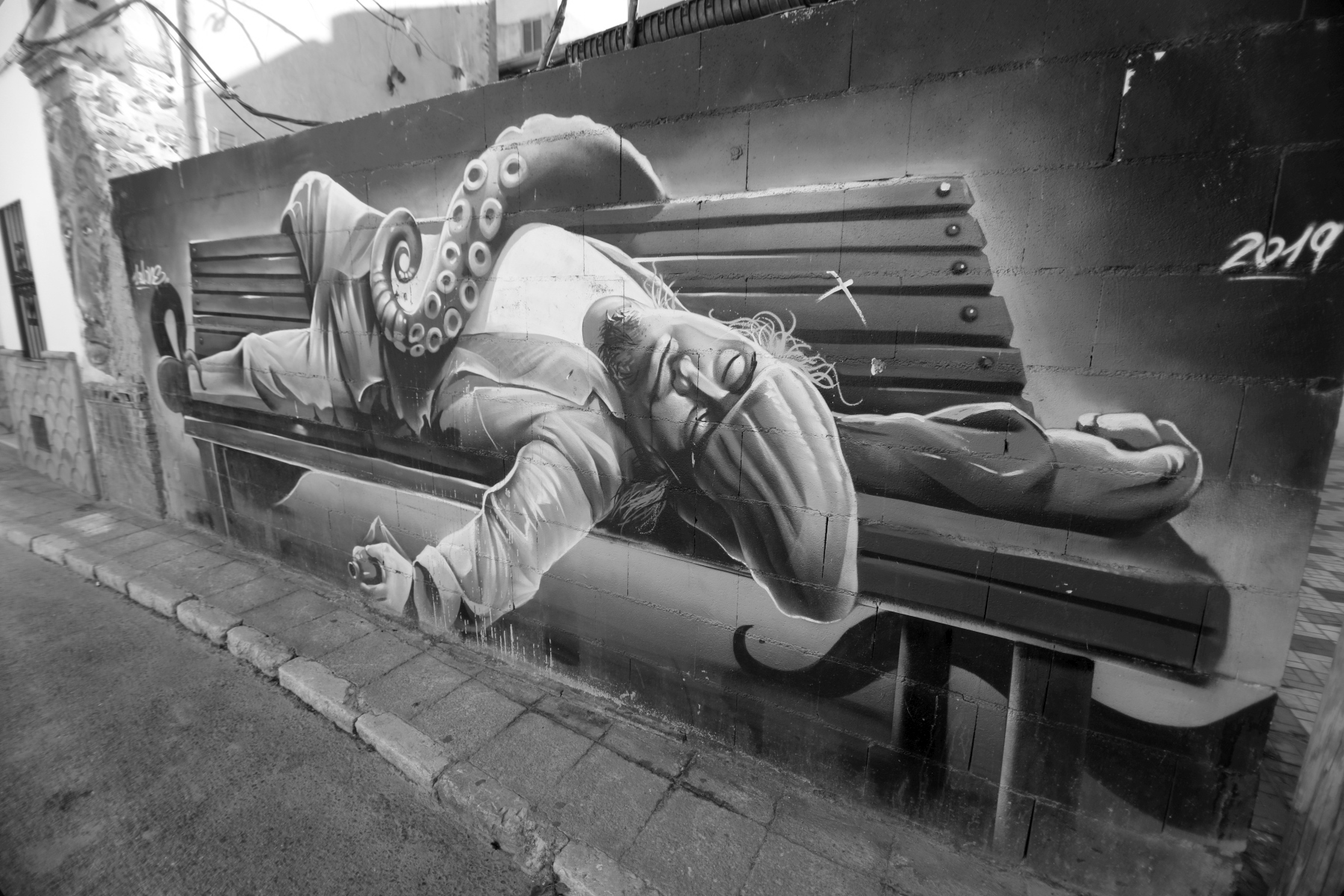Urban art in Spain has transformed numerous cities into true open-air museums, where streets become canvases that tell stories through colors, shapes and messages. This cultural phenomenon, which extends throughout Spain, reflects not only the creativity of artists but also the evolution of society and its openness to new forms of expression.
A prominent example of this transformation is the case of Fanzara, a small inland town whose resources were mainly limited to agriculture, forcing its inhabitants to travel to work in external ceramic factories along roads winding enough to have a RACC insurance. This panorama changed radically with the creation of the Unfinished Museum of Urban Art (MIAU), which turned Fanzara into a tourist attraction and considerably improved its economy. Additionally, the project helped improve relations between neighbors, which were polarized due to a controversial non-solid waste landfill project with a serious risk of water contamination. The arrival of the MIAU united the town, previously divided between those who saw an economic opportunity in the landfill, despite the ecological risks, and those who opposed it. The tension reached critical levels, with almost physical conflicts and the departure of some inhabitants. However, in just three years, street art managed to unite the entire community, overcoming old disputes and fostering a sense of pride and hope among residents.
In Malaga, the Lagunillas neighborhood was a place that was in decline and has been restored with an element as simple as color. There is graffiti on all the walls of all the cities in the world, but what is no longer so easy to find is that these graffiti collect the most traditional popular culture and heritage and manage to express it through the avant-garde of street art. Now Lagunillas emerges as a vibrant urban canvas that reflects both traditional culture and avant-garde expressions. Artists like Jonathan Morillas (Doger), with his versatile graffiti, Aintzane Crucetafocused on female forms and mythology, and Eduardo Luque (Lalone), known for his hyper-realistic style, have turned Lagunillas into an open-air gallery. One of his most notable murals is a tribute to Pablo Raez, a young athlete from Marbella who lost his life at the age of 20 in 2017 due to leukemia, which deeply impacted the Andalusian community. A year before his death, Ráez started a social media campaign to encourage bone marrow donation, which resulted in a significant increase in donations in Andalusia. Depicted on the façade of a building, Ráez is immortalized in the act of flexing his muscles, an iconic gesture that accompanied his motto “always strong.” Artist Lalone created this fourteen-meter mural, deliberately choosing not to include the marks of the disease in his portrait so that Ráez will be remembered for his resilience and fighting spirit.
In San Sebastian, the Donostia Apain initiative was created that seeks to beautify different areas of Donostia-San Sebastián through the creation of murals and other works of urban art. This initiative brings together local and international artists to transform public spaces and facades, thus enriching the urban environment with visual artistic expressions. The initiative has had several editions, in which interventions have been carried out in neighborhoods such as Martutene, Loiola and El Centro, among others.
Seville, on the other hand, is a city that shines both for its art visible in famous corners and for that hidden in its less busy streets. From advertising tile art to avant-garde galleries and street graffiti, Seville weaves tradition and modernity into a fascinating urban tapestry. The city invites you to discover a cultural wealth that transcends the apparent, offering an artistic experience that goes beyond expectations. Walking through the Polígono San Pablo, we find a neighborhood proud of its urban art. More than a decade ago, artists from around the world turned the facades into murals intended to make people think and bring a message of commitment to the viewer. Such as Josh Saranitis, considered one of the best muralists in the world, or the women with the blue face of Nena Sánchez, with books on their heads, to represent the education that will lead them to conquer the world. It is not the only place that serves as a canvas for urban art. Local artists continue to contribute their creations, and even the “parasound” walls of the S-30 ring road display the creations of Over+Drok, CN6, JoeKing, or Piko, among others. Eyes open, because in many parts of the city, and for no apparent reason, they appear to overwhelm you.
Also in cities such as Madrid, Barcelona, Valencia, Málaga and Zaragoza, urban art has found fertile ground for its development. Madrid, for example, stands out for initiatives such as Muros Tabacalera, a project that has turned the exterior walls of the La Tabacalera Cultural Center into a vibrant showcase of urban art, where national and international artists display their works. Barcelona, for its part, is recognized for the Raval and Poblenou neighborhoods, areas that have become epicenters of graffiti culture and street art, offering a fusion between the history of the city and new artistic currents.
2024-02-28 18:52:30
#Murals #speak #Urban #Art #transforming #cities #live

